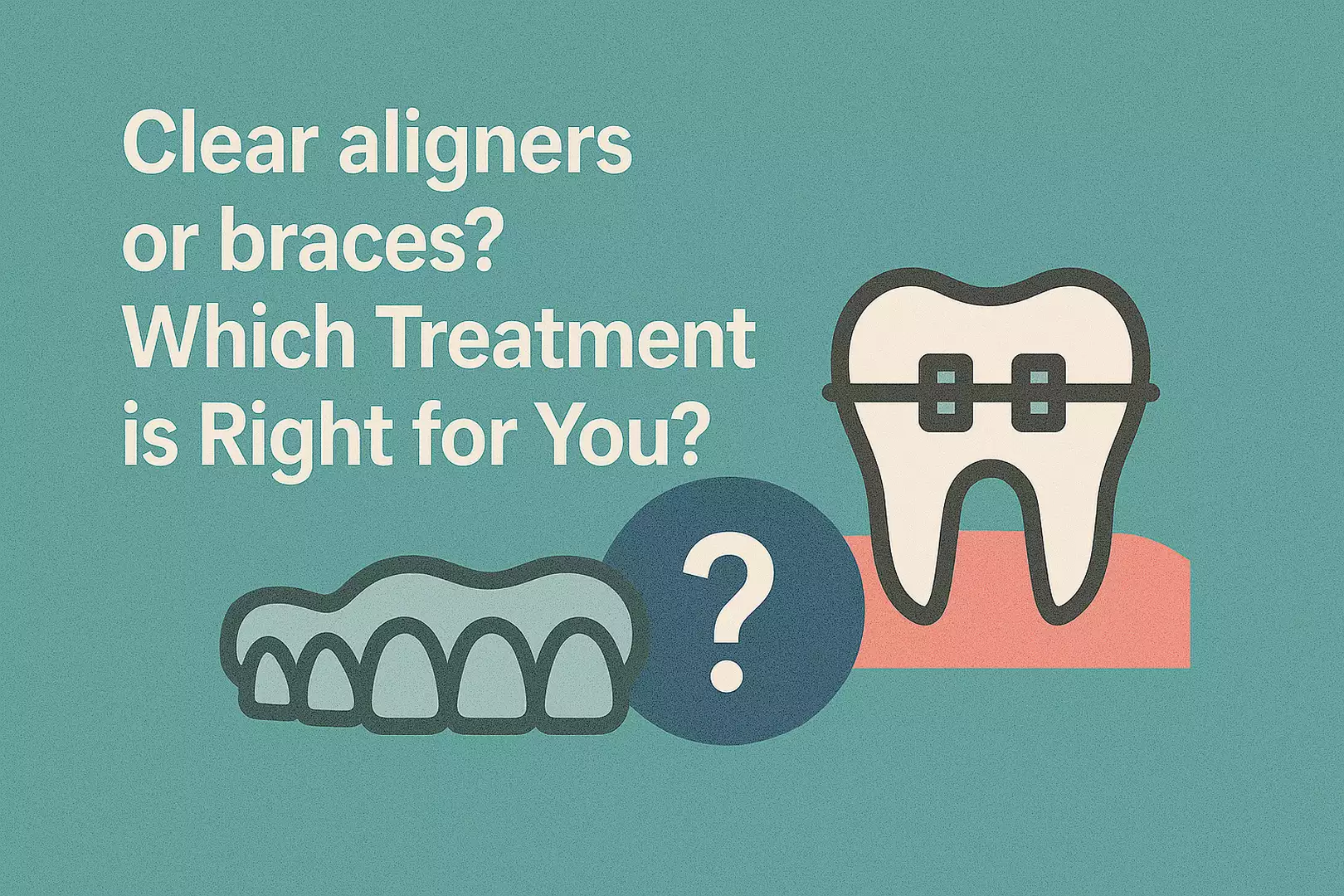When it comes to straightening your teeth, two popular options dominate the conversation: clear aligners and traditional braces. Both are effective, but the right choice depends on your dental needs, lifestyle, and aesthetic preferences.
What Are Clear Aligners?
Clear aligners are custom-made, transparent trays that gradually shift your teeth into alignment. Brands like Invisalign have made them a popular choice for teens and adults seeking a discreet solution.
Key Features:
- Removable: Easy to take out for eating, brushing, and flossing
- Nearly invisible: Ideal for patients concerned about appearance
- Comfortable: No metal brackets or wires to irritate the mouth
- Requires discipline: Must be worn 20–22 hours a day for best results
Clear aligners are most effective for patients with mild to moderate orthodontic problems, such as minor crowding, spacing, or slight bite irregularities. They work by gradually shifting teeth into better alignment using a series of transparent, custom-made trays. While they offer a discreet and removable alternative to traditional braces, their success largely depends on patient compliance—aligners must be worn for 20–22 hours per day for optimal results. Severe misalignments or skeletal issues may require conventional braces or other orthodontic interventions.
What Are Traditional Braces?
Braces use metal or ceramic brackets bonded to the teeth, connected by wires that apply continuous pressure to move teeth into place.
Key Features:
- Fixed: Always working—no risk of forgetting to wear them
- Highly effective: Especially for complex cases like severe crowding or jaw misalignment
- Customizable: Patients can choose colored bands for a personalized touch
- More visible: Even ceramic options are more noticeable than aligners
Braces are often the go-to for younger patients or those needing significant orthodontic correction.
Treatment Duration & Results
- Clear Aligners: Typically 6–18 months, depending on case complexity and patient compliance
- Braces: Usually 18–24 months, but can be shorter for some cases
Both treatments require retainers afterward to maintain results.
Cost Comparison
- Clear Aligners: Generally more expensive due to lab customization and brand pricing
- Braces: Often more affordable, especially metal versions
However, pricing varies by clinic and case. At Furkan Akmurat Dental Clinic, patients receive personalized treatment plans with transparent pricing and flexible options.
Oral Hygiene & Lifestyle
- Aligners: Easier to maintain oral hygiene since they’re removable
- Braces: Require more effort to clean around brackets and wires; certain foods must be avoided
Which One Is Right for You?
There’s no one-size-fits-all answer. If aesthetics and flexibility are your top priorities, clear aligners may be ideal. If you need complex correction or prefer a lower-maintenance routine, braces might be the better fit.
For a deeper dive into treatment options, you can explore this comparison by Smile2Impress or refer to AAO’s official guide on orthodontic appliances.

